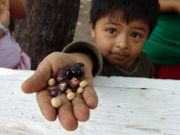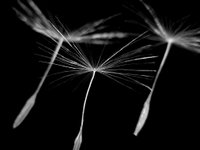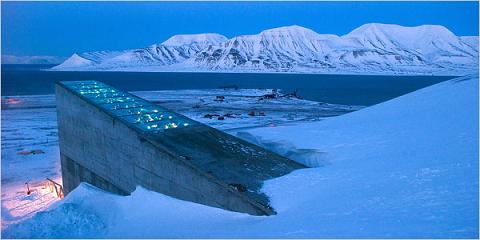 In an effort to classify, and preserve the world’s wild plant diversity, the Millennium Seed Bank Project (MSBP), based in Britain, is serving as the globe’s depository. Motivated by global changes in climate patterns, the MSBP has set out to gather as much material as possible in the hopes that if any of these plants species were to die out, they might be able to reintroduce them to the wild at a later stage. In May the bank collected it’s 1 billionths seed, and counting. The MSBP works with over 100 partners world wide and so far has material for 18,000 plant species originating from 126 different countries. By 2010 they hope to have 10% of the planets flora covered.
In an effort to classify, and preserve the world’s wild plant diversity, the Millennium Seed Bank Project (MSBP), based in Britain, is serving as the globe’s depository. Motivated by global changes in climate patterns, the MSBP has set out to gather as much material as possible in the hopes that if any of these plants species were to die out, they might be able to reintroduce them to the wild at a later stage. In May the bank collected it’s 1 billionths seed, and counting. The MSBP works with over 100 partners world wide and so far has material for 18,000 plant species originating from 126 different countries. By 2010 they hope to have 10% of the planets flora covered.
Norway was started a parallel project, the Svalbard Global Seed Vault, based in the Svaldbard archipelago, above the Arctic Circle; here they intend to gather seeds for the world’s food crops, in an effort to save them from natural disaster, wars, or other major catastrophes. A significant difference between these two projects is that the MSBP is collecting material to preserve species with no immediate, known, economic value.
The collecting of seeds, whether for profit or not, presents interesting dilemmas and discussion turns to how humans can “help” certain plants adapt to changing global weather patterns, thus directly manipulating natural selection.
When seeds are gathered scientist make note of the conditions the plant was living under. Next seeds are dried for several months, and once desiccated they are placed in silver envelopes and stores in temperatures of -20C. Under these conditions seeds are expected to last up to 500 years. The practice of banking seeds can be traced back all the way to Mesopotamians, who’s methods serve as the basis for todays seed banking approach.
 Other seed bank projects include the Heritage Seed Library, which aims to make available vegetable varieties that are not common, and the Seed Savers Exchange, which focused on preserving heirloom seed.
Other seed bank projects include the Heritage Seed Library, which aims to make available vegetable varieties that are not common, and the Seed Savers Exchange, which focused on preserving heirloom seed.
You can read further on the subject by looking at an article in the Christian Science Monitor, and another article in News West.
Image info; boy with seeds, dandelion seeds, Svalbard Seed Bank.
26.02.08 – The Svalbard Seed Bank has received its first collections of seeds in a ceremony with Noble Prize winner Wangari Mathai. The vault is located in the remote region of the Svalbard Islands because they are geologically stable, remote, and the frigid temperatures will provide natural refrigeration. You can read more about this, and see a layout of the vault in an article from the BBC here, or from the NYT here.
